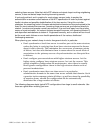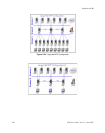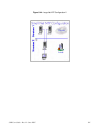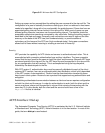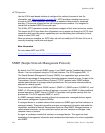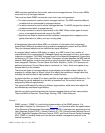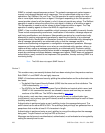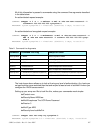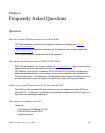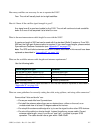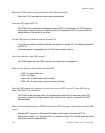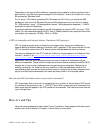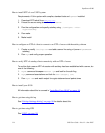
S100 User Guide – Rev. D – June 2005 107
2
5
3
All of this information is passed to commands using the command line arguments described
in the table below.
An authenticated request example:
COMMAND: snmpget -v 3 -n "" -u MD5User -a MD5 -A "The UCD Demo Password" -l
authNoPriv 255.255.255.255 sysUpTime.0
RESPONSE: system.sysUpTime.0 = Timeticks: (83491735) 9 days, 15:55:17.35
An authenticated and encrypted request example:
COMMAND: snmpget -v 3 -n "" -u MD5DESUser -a MD5 -A "The UCD Demo Password" -x
DES -X "The UCD Demo Password" -l authPriv 255.255.255.255 sysUp-
Time.0
RESPONSE: system.sysUpTime.0 = Timeticks: (83493111) 9 days, 15:55:31.11
The host shown above allows us to look at it using any level of authentication. Any hosts you
set up should be more restricted than that and require at least a level of authNoPriv when you
configure the VACM access control.
Setting up your snmp.conf file to look like this, makes your commands much simpler:
defContext none
defSecurityName MD5User
defAuthPassphrase The UCD Demo Password
defVersion 3
defAuthType MD5
defSecurityLevel authNoPriv
COMMAND: snmpget test.net-snmp.org sysUpTime.0
RESPONSE: system.sysUpTime.3.0 = Timeticks: (83517052) 9 days, 15:59:30.52
Table 2: Command Line Arguments
Parameter Command Line Flag Snmp.conf token
securityName -u NAME defSecurityName NAME
authProtocol -a (MD5|SHA) defAuthType (MD5|SHA)
privProtocol -x DES defPrivType DES
authKey -A PASSPHRASE defAuthPassphrase PASSPHRASE
privKey -X PASSPHRASE defPrivPassphrase PASSPHRASE
securityLevel -l (noAuthNoPriv|authNoPriv|authPriv) defSecurityLevel (noAuthNoPriv|authNoPriv|authPriv)
context -n CONTEXTNAME defContext CONTEXTNAME



